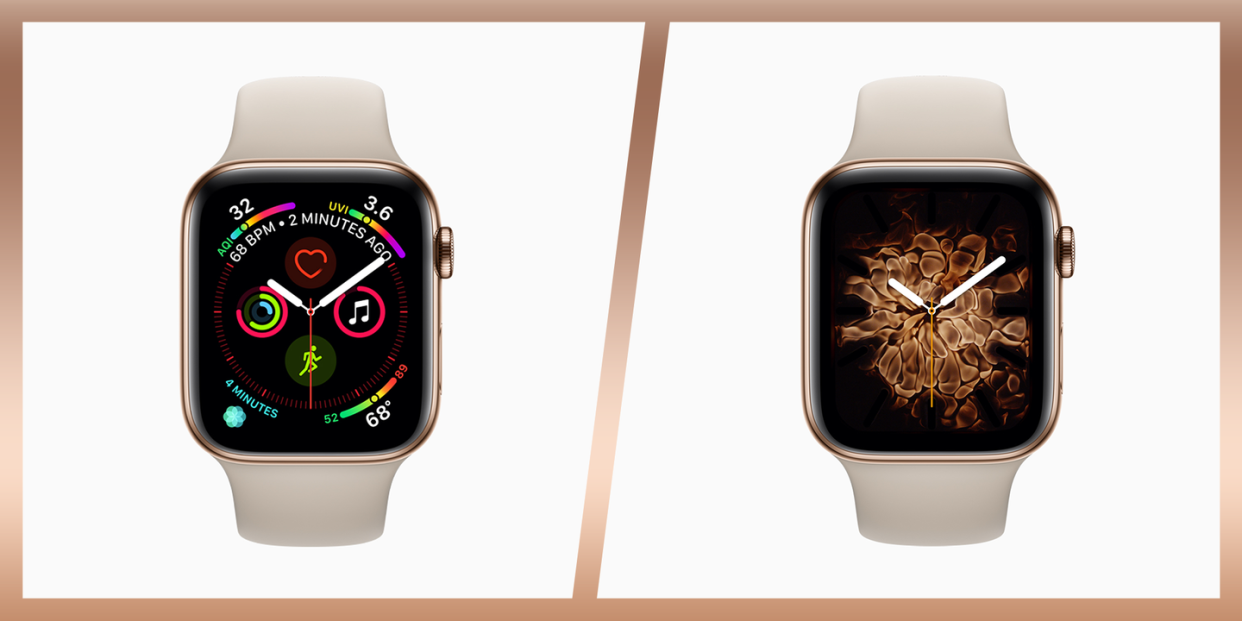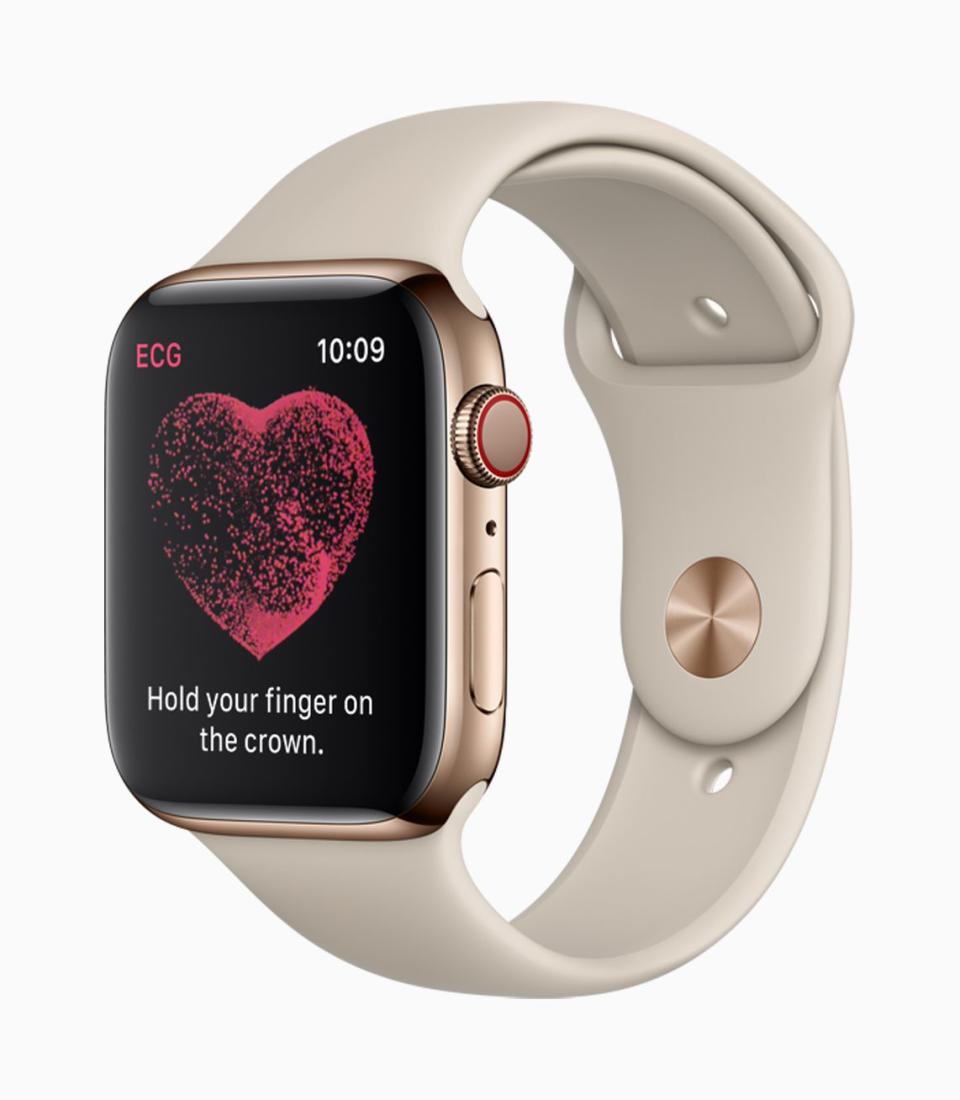The New Apple Watch Is Bigger -- Is It Better?

Apple's smartwatch plans to expand its reign on your wrist with more health options than ever. New sensors, wellness features, and expanded fitness tracking introduced in the 2018 model and watchOS 5 aim to help you to understand what's going on with the rest of your body, too.
After attending Apple's big September product event, I put a new Series 4 Watch to the test to see what works, what doesn't, and what features make the device truly worthy of the space on your wrist.
[productreview contentProductReviewId='8702f9ef-c661-441d-bf02-e7f0f090f3a1' mediaId='9d7959d6-1dc1-44b5-92d7-81424edcc1fd' align='center' size='large'][/productreview]
Less Heart Than You're Hoping For (For Now)
The most exciting features coming to the Series 4 aren't here yet, so I didn't have a chance to try them. The new electrocardiogram (ECG) testing capability and the irregular heartbeat monitor promised at the product reveal won't be ready until "later this year." Apple claims the ECG app is an industry first for a consumer product, and the company received clearance from the FDA for both of the features.

By giving consumers active and passive methods to gauge their heart health, the company could change the way people monitor their well-being and communicate with their doctors, regardless of how effective the sensors prove to be. Apple isn't the only player pushing wearables into the healthcare space - Fitbit is working hard on monitors for sleep apnea and diabetes - but Apple, as the biggest name in consumer tech, could have a massive effect on the public's behavior.
New Year, New Look
The Apple Watch Series 4 expands the smartwatch's size while making the casing thinner. The edge-to-edge screen is 30 percent larger than the previous generation, with rounded corners, still with a slim, low profile.
I tested out a 44mm version, which didn't feel much different on my wrist than the 42mm Series 3 I was wearing before. Color and finish options include silver, gold, and space gray in aluminum or stainless steel (with space black instead of space grey in steel).

New watch faces allow you to add contacts directly to the interface, display multiple timezones on your home screen, and, of course, focus in on your health and fitness measurements. There are some crazy-looking elemental faces, featuring fire, liquid metal, water, and vapor effects, and the Breathe program has been expanded to its own Watch face as well.
Get Loud, Get Touchy
Apple overhauled the speaker setup, and the device is definitely louder than before. That's great for alarms, interacting with Siri, making calls using the built-in cellular service, if you have it, or the fun new Walkie-Talkie feature, which you can use to talk with other Watch wearers via Wi-Fi.
Controlling the Watch is also improved, with new haptic feedback on the digital crown. The added tactility from haptics was a bigger bonus than I expected - I loved actually feeling like I was controlling a machine, especially when I was otherwise distracted during workouts.

Speed and Power
Inside, the new S4 chip means the Series 4 is faster than previous versions of the Watch, which is noticeable when switching between different faces and apps. The battery life is about the same as the Series 3, which is good considering the enhanced speed and thinner case.
I was able to make it about two full days without charging up (I turned the device off at night), but as always, more battery would be better. Apple does say that it improved the battery life for outdoor workouts up to 6 hours using GPS tracking, so wearers could potentially log a whole marathon, if they're fast enough.
Putting the Watch Through Its Paces
Running
Apple introduced pace alerts for outdoor runs and a new rolling mile pace, which shows pace for the immediately preceding mile mid-run.
Setting up target goals for my first half marathon was finished in a few simple taps and turns of the digital crown. Checking my status during the race was as easy as lifting my wrist, and thanks to the guidance I smashed my target finish time.
The one missing run tracking feature is a heart rate range monitor like in the Suunto 9, which alerts you when you drop above or below your target range. Maybe next year.

Weight Room
Other new fitness features include Yoga and Hiking activities, which I didn't test. When I wore the Watch during a weightlifting session, however, the digital crown pressed uncomfortably into the back of my hand during presses and pushups.
Sleep
Notably also missing was any form of built-in sleep tracking, which competitors like Fitbit have made a centerpiece of their wearable lines. An Apple rep pointed out that third-party sleep tracking apps for the Watch exist, but said there was "nothing to announce at this time."
As always, gear from Apple won't come cheap. The Series 4 starts at $399 for the GPS-enabled version, and jumps up to $499 for cellular.
The new design and heart health features make the Series 4 a clear step up for the line, but sharp performance from watchOS 5 makes the newly discounted Series 3 ($279) an attractive option, too. If you already have one of those, it might be worth it to wait for the new heart health features to launch before upgrading.
Tech companies like Apple thrive on creating exaggerated excitement around their products, especially when the upgrades from previous models are minimal. If the ECG and AFib detection fulfill their potential, though, the Series 4 could be a landmark moment for the brand as a definitive shift into the medical realm. If the features don't pan out, the latest version of the Apple Watch will still be a solid smartwatch, but just a slight improvement upon its predecessors.
('You Might Also Like',)
